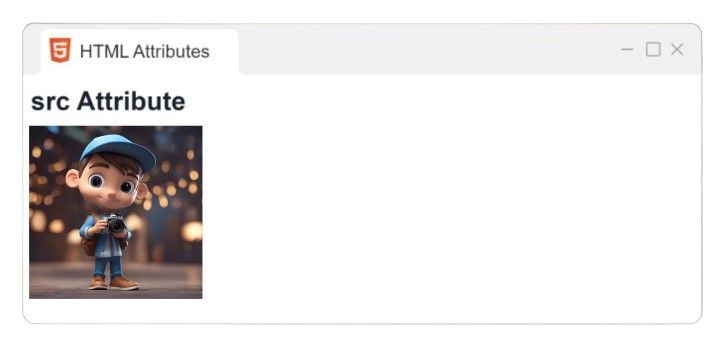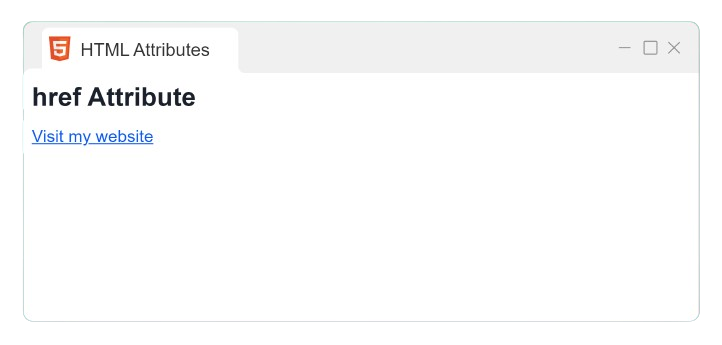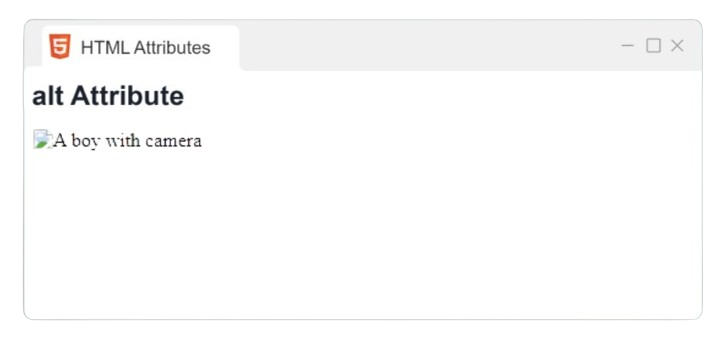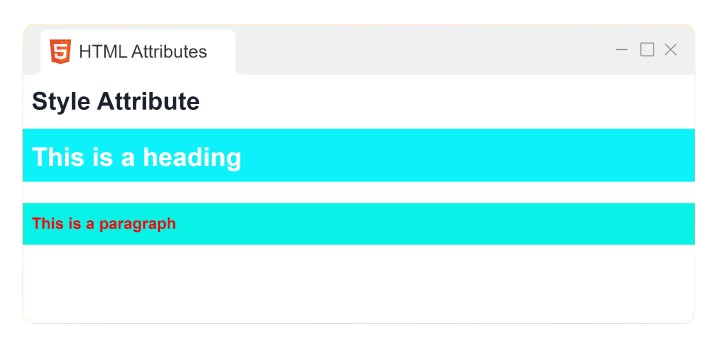HTML Attributes
HTML attributes are pieces of information that accompany HTML elements to add additional information or functionality. An attribute of an HTML element is declared by an opening tag, and it is made up of a name and a value separated by an equals sign (=) and double quotes ("").
src Attribute
The src attribute gives the URL of an external resource, like an image or a script.
Example:
<img
src="little_boy.jpg">
Output

href Attribute
The href attribute defines the URL of the destination of the link, employed with the <a> tag.
Example:
<a
href="">
Visit my website
</a>
Output

width and height Attributes
The width and height attribute is employed to define the width and height of an image.
Example:
<img src="little_boy.jpg" width="400" height="400">alt Attribute
The alt attributes show alternative text for elements, such as if the picture fails to load.
Example:
<img src="little_boy.jpg" alt="A boy with camera">Output

id Attribute
The ID attribute is employed to give a unique identifier to an element in the HTML document.
Example:
<p>
This is a paragraph
</p>
Title Attribute
The title attribute specifies additional information for an element. It is often shown as a tooltip when the user puts the mouse over the element.
Example:
<p>
This is a paragraph
</p>
Output
Style Attribute
The style attribute allows you to set inline CSS styles for an element directly from the HTML.
Example:
<h1 style="background-color:aqua; color:white;"> This is a heading </h1>
<p style="background-color:aquamarine; color:red;"> This is a paragraph </p>Output


